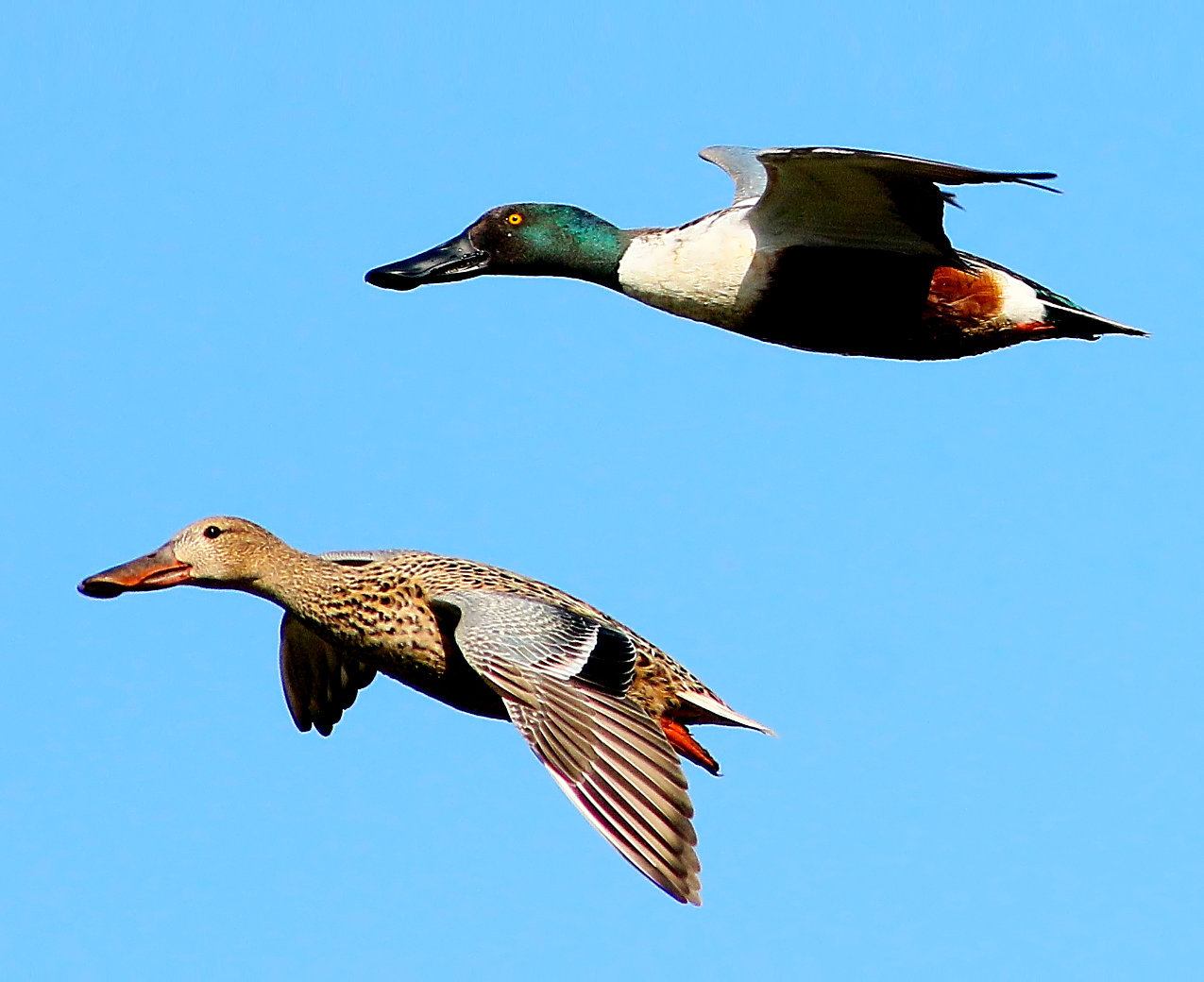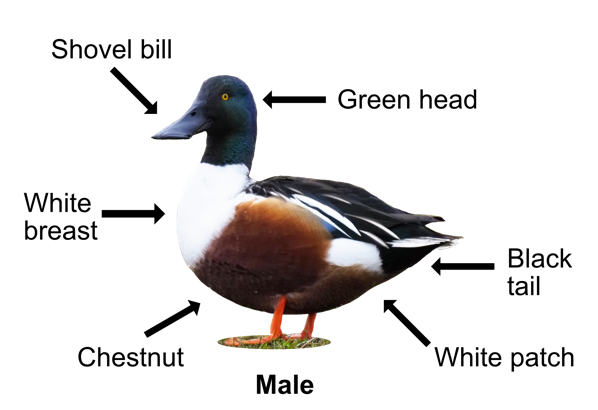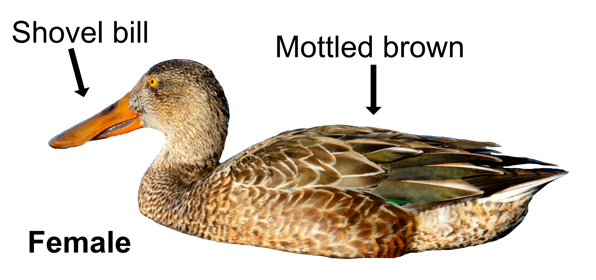
Living up to its name the Shoveler has a large and distinctive shovel-like bill which it uses to feed at the surface of the water. It breeds in small numbers in Britain but is more widespread in winter.
The Shoveler is slightly smaller than a Mallard. It has a flat-looking head and swims low in the water with its large broad shovel-like bill held at an angle, giving it a distinctive profile. The male has a green head, white breast and chestnut sides, with a white patch before its black under-tail. The female is a similar mottled brown to a female Mallard but with her distinctive shovel bill. They both have bright orange legs. In flight, the wings appear set far back and there is a light blue patch on the forewings. Despite their stout appearance, Shovelers are nimble fliers. They are generally quiet, but the male has a hoarse, "took took" call when chasing off rival males.

They use their broad bill to filter small creatures and seeds from water and mud by sweeping them from side to side. Inside the bill are rows of tiny spines (called 'lamellae') that trap small animals and plant remains. Groups of Shovelers may feed together by swimming in circles, stirring up the water and bring food to the surface. Typical food includes water snails, insects, seeds, bits of plant, and larvae.
About 1,000 Shovelers breed in Britain, mainly in southern and eastern England, especially around the Ouse Washes, the Humber and the North Kent Marshes. The male establishes a small territory, which he defends vigorously in the early stages of nesting. To attract a mate, he performs elaborate courtship behaviours both on the water and in the air. A dozen or more males may pursue a single female. Once paired, the happy couple build their nest in a grassy area away from open water. The nest is a shallow depression on the ground, lined with plant material and down. Mum lays 9-11 eggs in April which hatch after 22 days. The young chicks can feed themselves and are looked after by mum. Like many ducks, dad leaves mum to do all the childcare and goes off to do his flightless four-week moult. The youngsters can fly 40 days later and become independent.

In winter, British breeding birds move south and are replaced by an influx of continental birds from further north. By October, most of the British birds have migrated to France and Spain and as many as 18,000 north and northeastern European Shovelers have arrived to overwinter here. Sadly, Shoveler numbers have been declining as lowland wet grassland has been drained for agriculture. The best breeding sites are now protected and managed and their numbers are expected to increase with the creation of more new wetlands. The oldest ringed Shoveler survived 20 years.
Their Latin name (since 2009) is 'spatula clypeata' where 'spatula' is Latin for a spoon and 'clypeata' means 'shield-bearing' from 'clypeus' a 'shield'. A shield-bearing spoon, referring to its broad bill, I suppose. A common name for the Shoveler is 'shovel bill' which fits it perfectly.